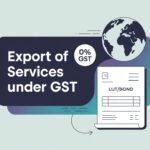GST on the Sale of Old and Used Vehicles : New Tax Concept
Understanding GST on the Sale of Old and Used Vehicles: A Simple tax concept
Important GST Rules for Old and Used Vehicles
1. If Depreciation is Claimed (Under Section 32 of the Income Tax Act, 1961)
- GST is calculated only on the margin between the selling price and the depreciated value of the vehicle.
- If this margin is negative (selling price < depreciated value), no GST is payable.
2. In Other Cases (No Depreciation Claimed)
- GST is calculated only on the margin between the selling price and the purchase price.
- If this margin is negative (selling price < purchase price), no GST is payable.
Examples to Understand GST on Old Vehicles
Example 1: Selling at a Loss (Depreciation Claimed)
Table Of Content
- Understanding GST on the Sale of Old and Used Vehicles: A Simple tax concept
- Important GST Rules for Old and Used Vehicles
- 1. If Depreciation is Claimed (Under Section 32 of the Income Tax Act, 1961)
- 2. In Other Cases (No Depreciation Claimed)
- Examples to Understand GST on Old Vehicles
- Important Points to Remember
- Why Does This Matter?
- Conclusion
- FAQs
- 1. Is GST applicable if I sell my used vehicle as an individual (not a registered taxpayer)?
- 2. What happens if the margin is negative?
- 3. Does this rule apply to all types of vehicles?
- 4. What is the GST rate on used vehicles?
- 5. Do unregistered individuals need to worry about GST on vehicle sales?
- Purchase Price: ₹20,00,000
- Depreciation Claimed: ₹8,00,000
- Depreciated Value: ₹12,00,000
- Selling Price: ₹10,00,000
Here, the margin = Selling Price – Depreciated Value = ₹10,00,000 – ₹12,00,000 = -₹2,00,000 (negative margin).
Result: No GST is payable since the margin is negative.
Example 2: Selling at a Profit (Depreciation Claimed)
- Purchase Price: ₹20,00,000
- Depreciation Claimed: ₹8,00,000
- Depreciated Value: ₹12,00,000
- Selling Price: ₹15,00,000
Here, the margin = Selling Price – Depreciated Value = ₹15,00,000 – ₹12,00,000 = ₹3,00,000.
Result: GST is payable at 18% on ₹3,00,000 = ₹54,000.
Example 3: Selling Without Depreciation Claimed (At a Loss)
- Purchase Price: ₹12,00,000
- Selling Price: ₹10,00,000
Here, the margin = Selling Price – Purchase Price = ₹10,00,000 – ₹12,00,000 = -₹2,00,000 (negative margin).
Result: No GST is payable since the margin is negative.
Example 4: Selling Without Depreciation Claimed (At a Profit)
- Purchase Price: ₹20,00,000
- Selling Price: ₹22,00,000
Here, the margin = Selling Price – Purchase Price = ₹22,00,000 – ₹20,00,000 = ₹2,00,000.
Result: GST is payable at 18% on ₹2,00,000 = ₹36,000.
Important Points to Remember
- Negative Margin = No GST: If the selling price is lower than the purchase or depreciated value, you don’t have to pay GST.
- Positive Margin = GST on the Difference: If the selling price is higher, GST applies only to the margin.
- GST Rate: The GST rate for old and used vehicles is 18%.
Why Does This Matter?
If you’re in the business of selling old vehicles, understanding these rules can save you from unnecessary GST payments or confusion.
Conclusion
If you’re planning to sell or purchase a used vehicle, make sure to calculate the GST based on these rules to avoid any surprises. For further insights on GST compliance, check out our other articles on tax updates and financial planning.
FAQs
1. Is GST applicable if I sell my used vehicle as an individual (not a registered taxpayer)?
2. What happens if the margin is negative?
3. Does this rule apply to all types of vehicles?
4. What is the GST rate on used vehicles?
5. Do unregistered individuals need to worry about GST on vehicle sales?
Stay tuned for more updates on GST and financial regulations!





